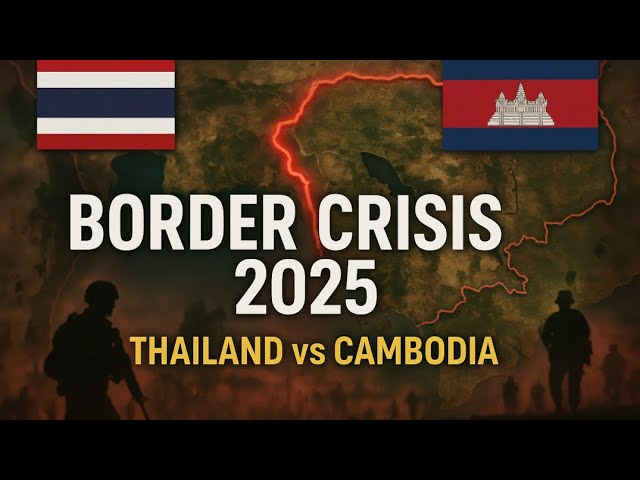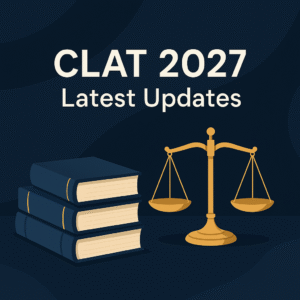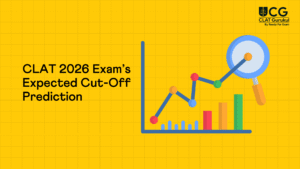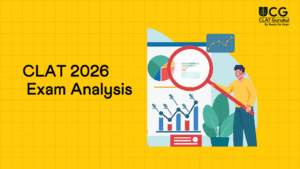
Thailand–Cambodia Border Dispute and Cultural Rivalry
GK & Current Affairs for CLAT | CLAT Current Affairs 2026
Powered by CLAT Gurukul – Best online coaching for CLAT
Introduction:
On July 28, 2025, Cambodia and Thailand agreed to an “immediate and unconditional ceasefire” following days of deadly cross-border violence. The ceasefire was brokered with the help of Malaysian Prime Minister Anwar Ibrahim, and agreed upon by Hun Manet (Prime Minister of Cambodia) and Srettha Thavisin’s government, represented by Phumtham Wechayachai of Thailand.
This renewed border skirmish is part of a long-standing and deeply rooted conflict between the two Southeast Asian neighbors. At the heart of the dispute is territorial contestation and cultural rivalry, especially surrounding the Preah Vihear Temple and historical narratives of ownership.
This issue is significant from a CLAT 2026 perspective as it connects topics from international relations, UNESCO heritage laws, border treaty law, historical claims, and ASEAN diplomacy. Students using the best online coaching for CLAT should study this topic to prepare for possible legal reasoning and current affairs-based MCQs or passages.
Why in News:
- Cambodia and Thailand reached a ceasefire agreement after days of border clashes in late July 2025.
- The clashes were triggered by a long-standing territorial dispute, nationalistic sentiments, and unresolved historical claims.
- The conflict escalated to recalls of ambassadors, trade bans, border closures, and the death of a Cambodian soldier.
- A major underlying factor remains the contested cultural ownership of the Preah Vihear Temple.
- This standoff reflects the complex intersection of diplomacy, identity, and international heritage law.
Point-Wise Summary of the Article:
- Ceasefire Reached After Violent Clashes:
- Fighting erupted in May 2025 near a disputed border area.
- A Cambodian soldier was killed, prompting both sides to escalate the matter.
- On July 28, both sides agreed to a ceasefire during a meeting in Kuala Lumpur with Malaysian mediation.
- Diplomatic Fallout and Tit-for-Tat Measures:
- Cambodia:
- Expelled Thai diplomats.
- Downgraded diplomatic ties with Bangkok.
- Banned Thai fruit imports and halted Thai media broadcasts.
- Thailand:
- Withdrew its ambassador from Phnom Penh.
- Closed all land border crossings with Cambodia.
- Accused Cambodian soldiers of instigating violence.
- Historical Root of the Conflict – Preah Vihear Temple:
- A UNESCO World Heritage Site, the temple lies on the Thai-Cambodian border.
- It was built during the Khmer Empire (11th–12th century), which ruled over present-day Cambodia and large parts of Thailand.
- Both nations claim cultural ownership, triggering fierce nationalistic sentiments.
- Colonial Legacy and Legal History:
- The 1962 ICJ ruling awarded the temple to Cambodia.
- However, Thailand disputes the ruling’s interpretation, claiming territorial overlap in the surrounding areas.
- France’s colonial-era maps (drawn during their rule in Indochina) contributed to the dispute.
- Cultural and Religious Identity Conflict:
- Both nations follow Theravada Buddhism and share many religious festivals, language roots, and traditions.
- Yet, political leaders have used temple ownership narratives to assert nationalist claims and gain domestic support.
- Role of Nationalism and Populism:
- Political rhetoric, especially during elections, often inflames the dispute.
- Both Cambodian and Thai leaders accuse the other of manipulating history to serve their domestic narratives.
- Previous Flare-ups and Legal Attempts:
- In 2008, Cambodia listed the temple as a UNESCO World Heritage Site, triggering Thai protests.
- Violent clashes occurred in 2011 and 2013, with casualties on both sides.
- Cambodia had earlier tried to invoke UNESCO and ICJ mechanisms, but enforcement remains weak.
- ASEAN’s Diplomatic Limitations:
- The regional bloc ASEAN has a non-interventionist policy, limiting its role in resolving such conflicts.
- However, Malaysia’s diplomatic efforts this time played a crucial role in brokering peace.
- Ongoing Mistrust and Cultural Disputes:
- Even after the truce, mutual suspicion remains high.
- Historical wounds, contested maps, and cultural nationalism mean the peace is fragile.
- Geopolitical Relevance:
- The standoff has drawn attention from UNESCO, the United States, and India, given strategic interest in Indo-Pacific regional stability.
- Washington has urged both parties to de-escalate.
Notes on Important Terms:
Term | Explanation |
Preah Vihear Temple | A 12th-century Khmer temple located at the Thai-Cambodian border, subject to territorial disputes. |
ICJ (International Court of Justice) | The UN’s principal judicial organ that resolved the temple dispute in 1962 by awarding it to Cambodia. |
Theravada Buddhism | A major branch of Buddhism followed predominantly in Thailand, Cambodia, Sri Lanka, and Myanmar. |
ASEAN (Association of Southeast Asian Nations) | A regional intergovernmental organization of Southeast Asian countries promoting peace and cooperation. |
UNESCO World Heritage Site | A landmark recognized by the United Nations Educational, Scientific and Cultural Organization for its cultural, historical, or scientific significance. |
Khmer Empire | A powerful Southeast Asian empire (9th to 15th century) that shaped Cambodian and Thai cultural identities. |
Cultural Nationalism | Promotion of national identity through cultural symbols and heritage claims. |
Legal and International Relations Relevance for CLAT 2026:
- Public International Law:
- The case connects with the sovereignty vs. cultural heritage debate under UNESCO and ICJ frameworks.
- The 1962 ICJ ruling is a key precedent on territorial adjudication.
- Legal Reasoning:
- Aspirants may be asked to analyze if UNESCO designation can override state sovereignty.
- Or if cultural ownership rights justify border claims.
- International Organizations:
- This topic links with ASEAN’s diplomatic mechanisms, ICJ, and UNESCO’s role in global governance.
- Current Affairs Awareness:
- Understanding South and Southeast Asia’s geopolitics is vital for CLAT Current Affairs 2026.
Expert Insight:
The article underscores that cultural disputes are not just symbolic or historical—they often lead to violent escalation and affect bilateral diplomacy. Cambodia and Thailand’s conflict over the Preah Vihear Temple is not just about religion or history, but about national pride, identity, and territorial integrity.
India, a close observer of Southeast Asian affairs, should be mindful of similar border and cultural disputes in its own region (e.g., India-China border, India-Nepal map disputes).
Conclusion:
The Thailand-Cambodia border conflict reflects how deep-seated cultural and historical tensions can spill into violent border clashes, even in the 21st century. Though a ceasefire has been called, distrust and unresolved legal claims continue to fuel hostility. For long-term peace, legal clarity, cultural cooperation, and international mediation will be essential.
This issue is highly relevant for CLAT aspirants. It integrates themes from international law, border disputes, heritage protection, and diplomatic conflict resolution. Students enrolled in the best online coaching for CLAT should expect such topics to appear in current affairs-based passages, legal reasoning hypotheticals, or even static GK questions.
This Blog is Powered by CLAT Gurukul — India’s Leading Law Entrance Prep Platform
At CLAT Gurukul, we believe in empowering future legal minds with the right blend of knowledge, strategy, and mentorship. This blog is a reflection of our commitment to quality content that not only helps aspirants stay updated but also sharpens their conceptual clarity.
Why CLAT Gurukul?
- Personalized Mentorship by Top Legal Educators
- Comprehensive Study Materials & Legal Updates
- Daily Practice Sets, Mocks & Performance Tracking
- Result-Oriented Strategy for CLAT, AILET, and CUET
Whether you’re reading this article to deepen your understanding or to stay ahead in your exam prep — you’re already one step closer with CLAT Gurukul by your side.
Join thousands of successful aspirants who trusted CLAT Gurukul and cracked India’s top law entrance exams.
Visit https://www.youtube.com/@CLATGurukul/shorts to learn more or speak to our experts now!
Note from CLAT Gurukul
At CLAT Gurukul, we are committed to providing free CLAT study material, including CLAT current affairs, legal reasoning practice sets, general knowledge updates, logical reasoning questions, English comprehension exercises, and more — all curated by top mentors.
Our blog section is regularly updated with high-quality CLAT content tailored to match the evolving pattern of the CLAT UG exam. Whether you’re looking for CLAT 2026 current affairs, CLAT legal reasoning passages, or mock practice sets, we have you covered.
We believe in open-access learning and will continue to publish free CLAT preparation resources to help serious aspirants succeed.
Explore more free content under categories like:
Best online coaching for CLAT, CLAT current affairs, CLAT GK updates, CLAT legal updates, CLAT logical reasoning, and CLAT English preparation.
For structured learning, daily mocks, and expert mentorship, visit https://www.youtube.com/@CLATGurukul/shorts — the Best CLAT Coaching in Patna and India’s most trusted platform for CLAT online coaching.




